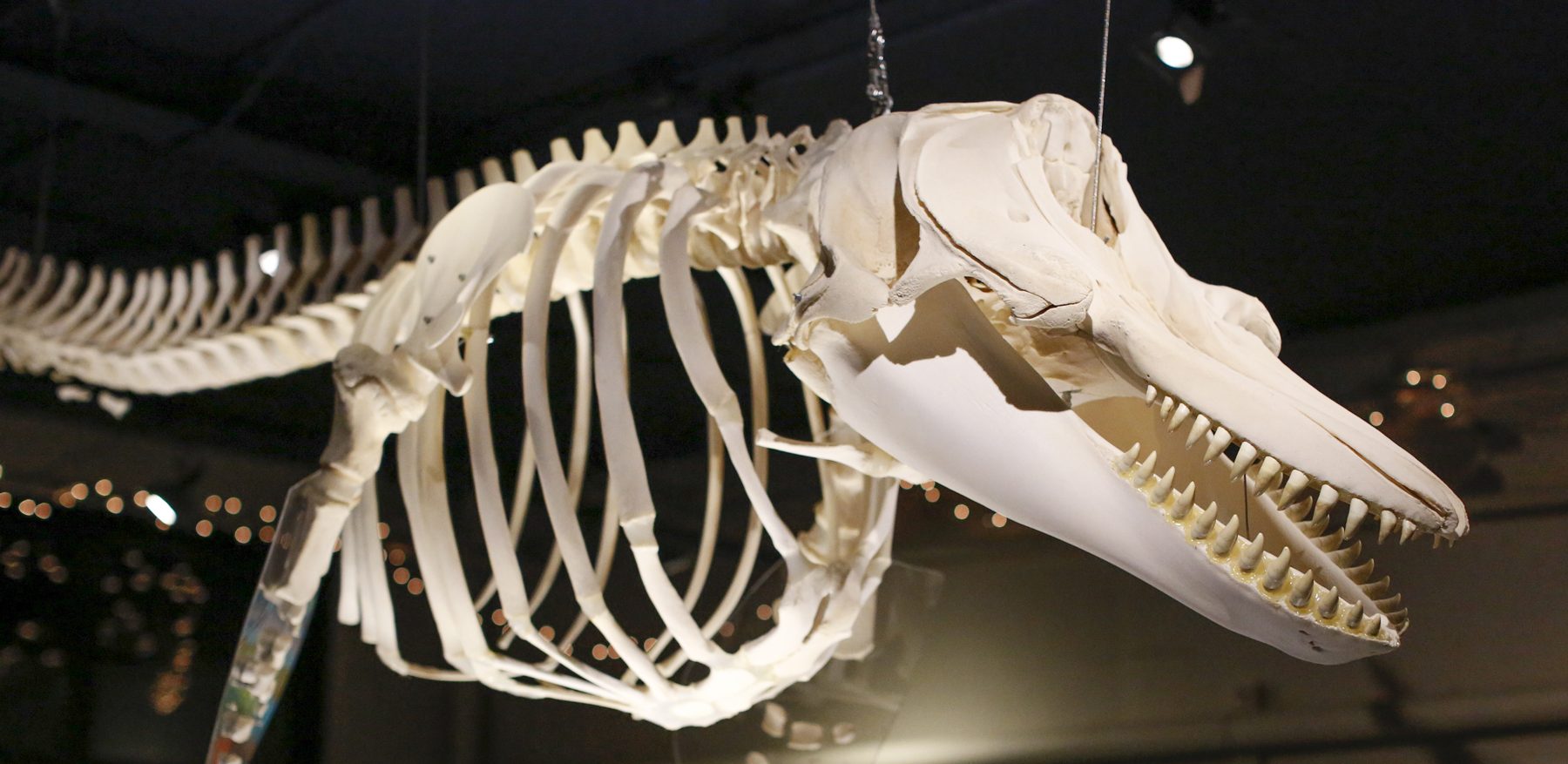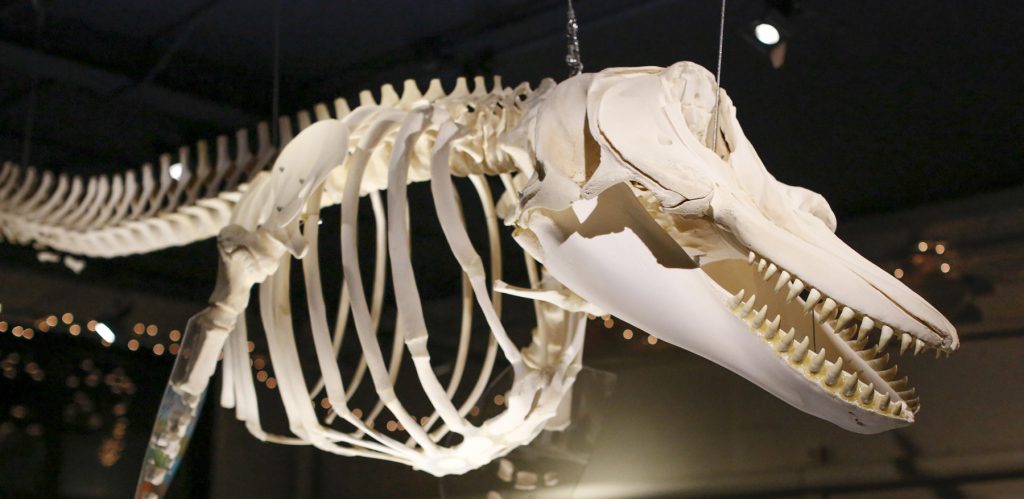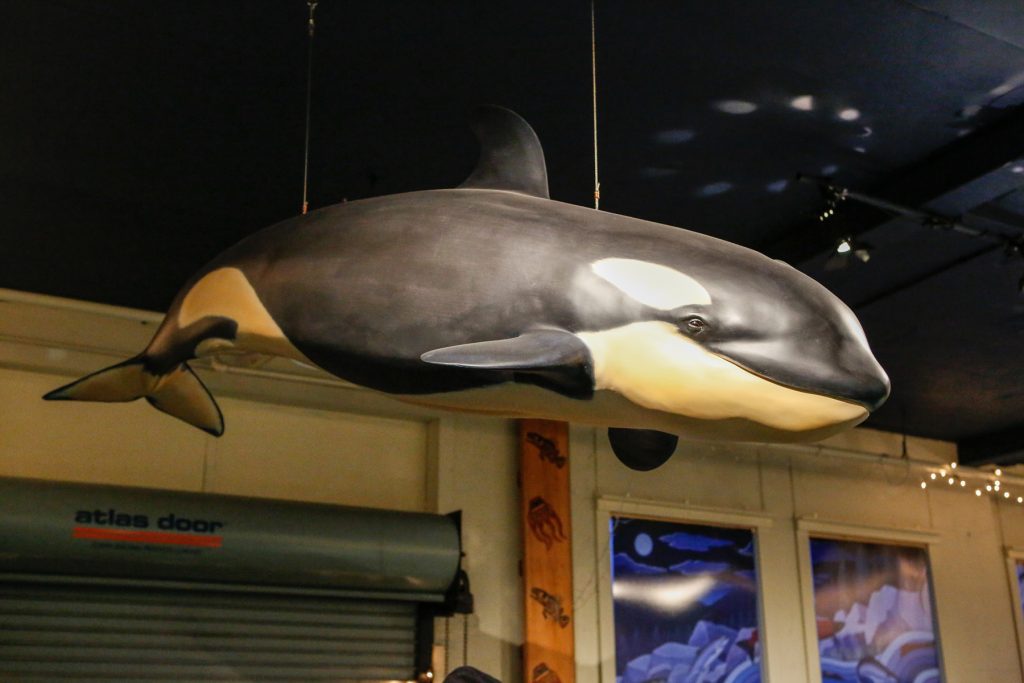
Many teachers are familiar with STEM education – where students explore the links between Science, Technology, Engineering and Mathematics. At SSSC, we are working to show people that the importance of thinking and working across the disciplines goes beyond STEM, to STEAM – incorporating Arts. Our “Dem Bones” and “Black and White” killer whale projects aimed to make science relevant by showing real world connections and how seemingly different disciplines like science and art can come together to make something amazing.
Dem Bones Killer Whale Skeleton Rearticulation Project

The DEM BONES project began in March of 2011 when two local boys reported a dead killer whale washed up on Kruzof Island, near Sitka. A team of veterinarians, marine biologists, and marine mammal stranding experts retrieved the whale and the local Seafood Producers Cooperatively graciously stored the carcass in its freezer. The Sitka Sound Science Center then assembled a team of volunteers and scientists to help with a rearticulation project. A Scientist in Residency Fellow (SIRF) at the Sitka Sound Science Center, Dr. Shannon Atkinson, headed up the project. Volunteers, kids, and Science Center staff helped clean, prepare, and hang the skeleton which took over a year as the oil was extremely difficult to expunge from the bones. The National Science Foundation supported the project in several ways: supporting the SIRF and then bringing a team from Idaho State Visualization Laboratory to scan each bone digitally so that three dimensional figures could be created. A cast of Kruzof’s teeth were made so that the original teeth could be given to the killer whale clan of the Tlingit people. The teeth are considered sacred objects.
Black and White Project

The same month that Kruzof’s skeleton was hung, a baby orca carcass was found in Yamini Bay, south of Sitka. With help from the Sitka Permanent Charitable Trust and the Crossett Foundation, we embarked on a new project that mixed art and science to create a one of a kind education experience called the Black and White project. Renowned scientific illustrator Ron Holthysyun based in California, made an exact replica of the baby whale and then came to Sitka to discuss the process of scientific modeling and illustration. He joined Scientist in Residency Fellow Dr. Alison Stimpert who studies bioacoustics and the impacts of man-made sound on whales, at Sitka High School where they lead a combined class of art and science students through science, form and function.